#but taste like nashi pears
Explore tagged Tumblr posts
Text
red pears are the best fruit rn !!!!
1 note
·
View note
Note
So Sukuna is from the heian era so he probably has only eaten a couple types of fruit (a quick google search says primary fruit in Japan at that time were persimmon and nashi pear), any ways he's never had strawberries! Or bananas! Or lychees!
I figure he doesn't like pop because it's too sweet and doesn't like popcorn because of the texture. So imagine feeding him some "exotic" fruit for the first time, do you think he'd like them?
Oooh I love that!! I think that Sukuna is very open to tasting food he never tried before. He is curious about it, eager to learn, and eager for a new experience. Also very critical, probably, but I guess with fruit, there wouldn't be much for him to criticize.
I love the idea of feeding Sukuna some fruit he never tried before. There is something very sensual about that. Like imagine holding out a strawberry to him, and you feel his large hand wrap around your wrist and bring the fruit to his mouth while you hold it.
You feel Sukuna's lips and tongue and even his teeth brushing over your fingertips as he eats. He doesn't let you pull your hand away, but you wouldn't even want to. It's so mesmerizing to watch Sukuna taste this new fruit in a way that can only be described as passionate.
His eyes are closed, and he sighs as he swallows, clearly approving of the taste. His mouth closes around the strawberry again, suckling on it, savoring it to the fullest, taking his time to taste it. Your pulse is racing as you watch him. Sukuna is always a beautiful man, but right now he looks otherworldly. You understand why he is called a God. He looks like an angel with his eyes closed and his face soft like that. Somehow, this moment feels so intimate, as if you are allowed to witness something very rare, something almost sacred.
And then those beautiful eyes open and look deeply into yours as a small grin lifts the corners of Sukuna's lips, and his hand tightens around your wrist before you feel his tongue lick up all the juice that was running down your hand, licking all the way up from your racing pulse in your wrist to your tingling fingertips, which he sucks into his warm mouth for a moment.
When Sukuna is finally finished, and no trace of strawberry juice is left on your skin, he presses a light kiss on your fingertips. His voice is low, sounding sensual and very pleased when he tells you,
"That was a true delicacy. Thank you for introducing it to me."
1K notes
·
View notes
Note
Your ability to produce quality artwork and silly things is admirable and I really like that about you, it's nice to see you have fun, thank you for sharing your art and thoughts, you're very cool!
huh!! thanks for thinking so jabjckabkj

peaches are one of my fave fruits ever, yesterday i inhaled like 4 while drawing LMFAOO i love fruits and theres not many i dont like
i dont like pears (except nashi pears) bc the texture bothers me. the taste is ok
28 notes
·
View notes
Text
Pear
after Susan Stewart No one ever died for a bite of one, or came back from the dead for a single taste: the cool flesh cellular or stony, white as the belly of the winter hare or a doe's scut, flicking, before she mates. Even an unripe one is delicious, its crisp bite cleaner almost than water and its many names just as inviting: Bartlett and Comice, Anjou, Nashi, Concorde and Seckel, the pomegranate-skinned Starkrimson, even the medieval Bosc, which looks like it dropped from an oil painting. It is not a sin to eat one, though you may think of a woman's body as you do it, the bell-shaped swell of it rich in your hand, and for this reason it was sacred to Venus, Juno, all women celebrated or dismissed in its shape, that mealy sweetness tunneling from its center, a gold that sinks back into itself with age. To ripen a pear, wrap it in paper, lay it in cloth by an open window or slip a rotten one beside it on a metal dish: dying cells call always to the fresh ones, the body's siren song that, having heard it once, we can't stop singing. This is not the fruit that will send you to hell nor keep you there; it will not give you knowledge, childbirth, power, or love; you won't know more pain for having eaten one, or choke on a bite to fall asleep under glass. It has no use for archer or hero, though anything you desire from an apple you can do with the pear, like a dark sister with whom you might live out your secret desires. Cook it in wine, mull it with spices, roast it with honey and cloves. Time sweetens and we taste it, so gather the fruit weeks before ripeness, let summer and winter both simmer inside, for it is a fall fruit whose name in China means separation, though only the fearful won't eat one with those they love. To grow a tree from seed, you'll need a garden and a grafting quince, bees, a ladder, shears, a jug; you'll need water and patience, sun and mud, a reverence for the elders who told no true stories of this fruit's origin, wanting to give us the freedom of one thing that's pleasure alone. Cool and sweet, cellular and stony, this is the fruit I'll never die for, nor come back from the dead for a single taste. The juice of the pear shines on my cheeks. There's no curse in it. I'll eat what I like and throw the rest to the grasses. The seeds will find whatever soils they were meant for.
Paisley Rekdal, Nightingale (Copper Canyon Press, 2019)
3 notes
·
View notes
Photo

猿梨[Sarunashi] Actinidia arguta var. arguta
猿[Saru] : Monkey
梨[Nashi] : Pear
It is so named because its fruit looks like that of pear and monkeys often eat it. Also known as 小桑[Kokuwa], 獼猴桃蔓[Shirakuchizuru], 獼猴桃葛[Shirakuchikazura], etc. The fruit is similar to a miniature kiwifruit, tastes sweet and sour.
かずら橋[Kazura-bashi](Vine Bridge,) one of the three most strange bridges in Japan located in Tokushima Prefecture, is made of its vines. https://goo.gl/maps/Ff4z1GnE5TVrXCzr9
11 notes
·
View notes
Text
A Taste of Japan: Exploring the Unique World of Japanese Fruits

Japan is famous for its exquisite cuisine, and its dedication to fresh, seasonal ingredients extends to the world of fruit. Beyond familiar favorites like apples and strawberries, Japan offers a vibrant array of unique fruits, some with distinct flavors and appearances. Let's embark on a journey to discover the delightful world of Japanese fruits!
Unique Flavors and Textures:
Nashi (Japanese Pear): These crisp, juicy pears are larger than their Western counterparts and boast a milder, lighter flavor. Their rough skin adds a textural contrast to the soft flesh.
Yuzu: This tart and fragrant citrus fruit is rarely eaten on its own, but its zest and juice add a unique zing to savory dishes, drinks, and desserts.
Melons: In Japan, melons are elevated to a near-luxury status. From the classic green-fleshed muskmelon to exotic varieties with white or yellow flesh, these melons are known for their sweetness and meticulous cultivation techniques.
Seasonal Delights:
Mikan (Mandarin Orange): A quintessential winter fruit, these easy-to-peel mandarins are juicy, sweet, and a welcome burst of sunshine during the colder months.
Strawberries: Japanese strawberries are renowned for their large size, vibrant color, and intense sweetness. These are often enjoyed plain or used in luxurious desserts.
Kaki (Japanese Persimmon): Available in fall, persimmons come in various types, some enjoyed crisp and astringent, while others are allowed to ripen for a softer, sweeter flavor.
Beyond the Fruit Bowl:
Japanese fruits extend their influence beyond the realm of fresh eating. Yuzu kosho, a condiment made with yuzu, chili peppers, and salt, adds a complex layer of flavor to dishes. Fruity mochi, dumplings filled with sweet bean paste infused with fruit flavors, are popular treats. Even Japanese sakes can have delicate hints of fruits like plums or peaches.
A Celebration of Freshness:
The appreciation for fresh, seasonal ingredients is a cornerstone of Japanese cuisine. Fruits are no exception, and their cultivation, presentation, and consumption are often elevated to an art form. So next time you're looking for a unique and delicious taste of Japan, explore the wonders of their fruit selection!
0 notes
Text
Some more trials of novel fruits I've never even seen before:
Today I got a handful of jujubes.
VERDICT: thoroughly underwhelming fruit. Will not buy again.
Granted, this /might/ just be a skill-issue, in that I simply bought some bad/old/unripe fruit this time, but Wikipedia seems to agree they're rather underwhelming:
On his visit to Medina, the 19th-century English explorer, Sir Richard Burton, observed that the local variety of jujube fruit was widely eaten. He describes its taste as like "a bad plum, an unripe cherry, and an insipid apple".
Anyhow, they're a yellow/green-to- reddish-brown fruit that's a little larger than a golf ball. Has firm crisp flesh reminiscent of a soft apple or a Nashi pear or similar, but with no sweetness, no juice, and nearly no flavour.
Imagine god made an apple but accidentally forgot to put any apple juice or apple flavour in it, and that's a jujube: little potato that grows on trees instead of underground; as sensually appealing as unflavoured tofu.
Has a little stone in the centre, like an olive pit. I shan't be saving the seeds and attempting to grow them; 100% not worth the effort imo.
Wikipedia says place of origin is likely _somewhere_ in south-west Asia, but nobody knows for sure because they've been cultivated and spread around the world for so long.
Given how flavour-neutral they are, there's probably a lot of different ways to cook these things into other things. 🤔

0 notes
Text
absolute highlight of my day is getting a banana in my english lecture
i have absolutely no idea why i’m so fucking excited to have a banana but every time i look over at it i grin and whisper ‘banana’ to myself in a happy voice
it’s like my brain just sees the banana and goes i can farm so much serotonin from looking at this bad boy
i’m waiting for it to ripen a little more. until then, i will keep farming the serotonin
#maybe it's because i don't eat fruit and my brain is like oh sweet jesus please eat this please lindsey please for the love of god just eat-#well#i do eat fruit sometimes#but i like vegetables a lot more than fruit#also i don't really buy it because in the past when i did i'd get like. 3 pears#eat one#then not want to go NEAR a pear for the next two weeks#and they'd just go bad or i'd force myself to eat it unhappily#oh you know what i want? nashis#what season are they in ??#google says march and november#well one site does#maybe i can find a single one in the supermarket. i'm not buying more than one#i have a lot of texture problems with fruit#this is very funny considering bananas are one of the worst. i'll gag half the time when i try to eat one#just because i don't like the texture. i love the taste. but get the texture away#i also just can't like. eat some fruit without cutting it up due to my jaw. and i'm lazy. so.
7 notes
·
View notes
Note
9. ...in public with rukiko
Send me a Ship and a Number and I will Write a Kiss
9 …in public.

Concealed Cravings
Tiny fingers enveloped around a nashi pear covered with a soft plastic web. Yuriko lifted the fruit, inhaling the sweet scent deeply. The aroma almost tingled on her tongue, the mouth-watering taste of the pome.
“Umh… Ruki, can we take a few nashis too?” The question was formed before Yuriko’s eyes even left the apple pear in her hand. “We could make a dessert from them…”
“Hmm, is that what my angel yearns for?” Ruki leaned in, capturing Yuriko’s chin with his cold fingers. Without a hurry, he turned her face toward his. She gasped slightly when the stormy eyes pierced her, almost like the couple would just have a serious conversation.
As Ruki moved a bit closer, Yuriko gazed around. The store was quiet at this hour, with no other customers in sight right now. The freezers around the fruit and vegetable section hummed softly; the only other sound was the babbling speech from a corridor further down at the supermarket.
“Your concentration wavers awfully lot today.” Ruki’s words made Yuriko return her gaze to him. She flinched, pondering if she had done something wrong as an icy thumb traced her bottom lip. “I will make sure you cannot think of anything but your master for the rest of the day.”
“Umh?”
There was no time to form an actual question when the cool lips collapsed with the warm ones, pulling them into a haste smooch. While the moment was over before it had properly started it was enough to make the floor shake under Yuriko’s feet. Pressing her palm on Ruki’s chest, she let out a bitsy wheeze as his lips left hers and curled into a smirk. Ruki picked up the nashi from her hand, putting it into the shopping basket along with a few others.
“Good girl~” Ruki whispered, taking Yuriko’s hand. “As your master, I must indulge your desires. Tonight’s dessert will be nashi pear puds.”

#answered asks#anon#ruki mukami#yuriko tsukino#rukiko#diabolik lovers#diabolik oc#fanfiction#diabolik lovers fanfiction#drabble
6 notes
·
View notes
Text



13 May 2021
These days, I eat about 80% plant-based (very rough estimate) to support my gut health and try to handle my IBS. I also take probiotics every day. So far, the combination of these factors is really helping. I thought I'd make a post to show what a day of eating mostly plant-based can look like.
This isn't particularly representative for two reasons:
1) At least six days a week, I have porridge for breakfast. I've posted several pictures of my yummy porridge bowls here before, though.
2) I rarely bother buying "fake meat" anymore, but I like to try new kinds just for the heck of it, and this was the first time I'd seen this one.
So, here we go – non-vegan things are marked with an asterisk.
Breakfast: a two-egg* omelette with salt, pepper, freeze-dried chives (these things last forever, I love them!), fresh parsley, and a sprinkle of nutritional yeast (tastes cheesy and a bit nutty, very umami-ful). On the side: an avocado drizzled with balsamic reduction. To drink: Lapsang Souchong tea with honey* and almond milk (normally I prefer soy or oat milk, but this almond milk is made from sustainably grown almonds watered with natural rainfall).
Lunch: asparagus roasted with salt and pepper and olive oil, then topped with lemon juice, chili flakes, fresh parsley, and a sprinkle of Parmigiano Reggiano cheese* (neither vegan nor vegetarian, because it's made with rennet, which autocorrect wanted to spell as "regret" 😂).
Dinner: fake chicken made from soy protein and marinated in various seasonings, accompanied with bok choy sauteed in olive oil, salt and pepper, a spoonful of ginger-garlic paste, a dash of fish sauce*, and a splash of apple cider vinegar. To drink (not pictured): a glass of cremant rosé. Dessert (not pictured): a few slices of nashi pear and a couple of pieces of dark chocolate.
#food#diet mention cw#personal#cosmo gyres#a day in the life#by cosmogyros#plant based#ovo-vegetarian (mostly)
2 notes
·
View notes
Note
omg yes!!! idk if it's just the autism but pears are just a "nuh uh don't like that" texture like... why is it... grainy???
OH FR FR thats why nashi pears are so fine. they basically feel like apples but taste like pears
there are certain foods i dont like bc i dont like textures mixed or smth looks like this but feels like that if u know what i mean?? for example, i dont like liquids and solid pieces mixed which is why im not a fan of soups or chunky fruit milk. and pears have this soft look and give when you bite into it and then suddenly its all hard bits in between, like youre eating a little bit of sand, it jsut rlly gives me goosebumps AHAHJCK i think the first time i ate a pear i held it in my mouth like a dog and tried to swallow the pieces without chewing too much or choking 💀
16 notes
·
View notes
Quote
No one ever died for a bite of one, or came back from the dead for a single taste: the cool flesh cellular or stony, white as the belly of the winter hare or a doe's scut, flicking, before she mates. Even an unripe one is delicious, its crisp bite cleaner almost than water and its many names just as inviting: Bartlett and Comice, Anjou, Nashi, Concorde and Seckel, the pomegranate-skinned Starkrimson, even the medieval Bosc, which looks like it dropped from an oil painting. It is not a sin to eat one, though you may think of a woman's body as you do it, the bell-shaped swell of it rich in your hand, and for this reason it was sacred to Venus, Juno, all women celebrated or dismissed in its shape, that mealy sweetness tunneling from its center, a gold that sinks back into itself with age. To ripen a pear, wrap it in paper, lay it in cloth by an open window or slip a rotten one beside it on a metal dish: dying cells call always to the fresh ones, the body's siren song that, having heard it once, we can't stop singing. This is not the fruit that will send you to hell nor keep you there; it will not give you knowledge, childbirth, power, or love; you won't know more pain for having eaten one, or choke on a bite to fall asleep under glass. It has no use for archer or hero, though anything you desire from an apple you can do with the pear, like a dark sister with whom you might live out your secret desires. Cook it in wine, mull it with spices, roast it with honey and cloves. Time sweetens and we taste it, so gather the fruit weeks before ripeness, let summer and winter both simmer inside, for it is a fall fruit whose name in China means separation, though only the fearful won't eat one with those they love. To grow a tree from seed, you'll need a garden and a grafting quince, bees, a ladder, shears, a jug; you'll need water and patience, sun and mud, a reverence for the elders who told no true stories of this fruit's origin, wanting to give us the freedom of one thing that's pleasure alone. Cool and sweet, cellular and stony, this is the fruit I'll never die for, nor come back from the dead for a single taste. The juice of the pear shines on my cheeks. There's no curse in it. I'll eat what I like and throw the rest to the grasses. The seeds will find whatever soils they were meant for.
Paisley Rekdal, Pear
58 notes
·
View notes
Text
How to buy fruit seeds Australia
No one can reap the fruit before planting trees is a popular saying which denotes the importance of growing fruit seeds Australia. Apart from farmers who grow fruit seeds Australia, many people like to plant the fruits they love to eat so that they can freshly taste the fruits from the home garden.
Most of the fruit seeds Australia require land to grow while some fruits such as Strawberries can be grown on pots. You can either be working from home, too busy with work at office, hit with a pandemic, being under lockdown or having risk in going out due to Covid; the best selling fruit seeds Australia can be purchased online. Highly productive growth of fruit seeds Australia are available for reasonable prices including home delivery and easy payment methods.

The most easy to grow fruit seeds in Australia?
The types of fruits that are suitable to grow can vary due to several reasons. Basically, the space available, the climatic conditions, type of soil, favorite fruits, time span of harvesting fruits, size of the tree and so forth. But in general, the following are the fruit seeds Australia grows and most of them grow in subtropical and temperate regions.
Apples
Lemon
Peaches
Pears
Grapes
Nashis
Nectarine
Plums
Apricots
Cherry
Strawberry
Advantages of growing fruits
Human well being is promoted when home grown fruits are consumed.
The health of people is strengthened with fresh and organic fruits all the same, the trees purify air providing clean air to breathe.
The relaxation for the mind comes with eating fruit grown by one’s own and thus self satisfaction and assurance of nutritional value is enhanced.
Growing fruits and vegetables is a direct mode of contribution to the eco friendly solutions to global issues.
Money spent on buying fruits can be saved to a certain extent and the favorite fruits can be tasted limitlessly.
What fruit seeds grow on pots
It is found out that 20-25 size gallon sized pots are suitable for growing fruit seeds Australia The most popular and widely grown fruit seeds Australia in pots are,
Strawberries
Lemon
Blackberries
Apple
Pomegranate
Fig
Peaches
Cherry
Guava
Watermelon
Pineapple
Raspberries
Different types of seed labels
There are few categories of seed labels one should know before buying and choosing vegetable, herbal, flower and fruit seeds Australia.
Open pollinated - These seeds are important for seed saving. The same type of fruits and vegetables similar to the parent plants can be produced with open pollinated seeds.
Hybrid - Two different types of seeds are crossed to prepare hybrid vegetable and fruit seeds Australia. These seeds are not true breeders but are active healthy and well balanced growth.
Heirloom - This type of seed label is preserved from generations and they are open pollinated.
Organic - Fruit and vegetable seeds produced from plants with USDA organic standards are known as Organic seeds.
Non- GMO - These seeds are produced without genetic engineering. The recombinant DNA technology is not used to grow these types of seeds.
1 note
·
View note
Text
Pear
after Susan Stewart
No one ever died for a bite
of one, or came back from the dead
for a single taste: the cool flesh
cellular or stony, white
as the belly of the winter hare
or a doe's scut, flicking,
before she mates. Even an unripe one
is delicious, its crisp bite cleaner
almost than water and its many names
just as inviting: Bartlett and Comice,
Anjou, Nashi, Concorde
and Seckel, the pomegranate-skinned
Starkrimson, even the medieval
Bosc, which looks like it dropped
from an oil painting. It is not a sin
to eat one, though you may think
of a woman's body as you do it,
the bell-shaped swell of it
rich in your hand, and for this reason
it was sacred to Venus, Juno, all women
celebrated or dismissed
in its shape, that mealy sweetness
tunneling from its center, a gold
that sinks back into itself with age.
To ripen a pear, wrap it in paper,
lay it in cloth by an open window
or slip a rotten one beside it
on a metal dish: dying cells call always
to the fresh ones, the body's
siren song that, having heard
it once, we can't stop singing.
This is not the fruit
that will send you to hell
nor keep you there;
it will not give you knowledge,
childbirth, power, or love;
you won't know more pain
for having eaten one, or choke
on a bite to fall asleep
under glass. It has no use
for archer or hero, though
anything you desire from an apple
you can do with the pear, like a dark sister
with whom you might live out
your secret desires. Cook it
in wine, mull it with spices, roast it
with honey and cloves. Time sweetens
and we taste it, so gather the fruit
weeks before ripeness,
let summer and winter both
simmer inside, for it is
a fall fruit whose name in China
means separation, though only the fearful
won't eat one with those they love.
To grow a tree from seed,
you'll need a garden
and a grafting quince, bees, a ladder,
shears, a jug; you'll need water
and patience, sun and mud,
a reverence for the elders
who told no true stories
of this fruit's origin,
wanting to give us the freedom
of one thing that's pleasure alone.
Cool and sweet, cellular and stony,
this is the fruit I'll never die for,
nor come back from the dead
for a single taste.
The juice of the pear
shines on my cheeks.
There's no curse in it. I'll eat
what I like and throw the rest
to the grasses. The seeds
will find whatever soils they were meant for.
-Paisley Rekdal
from Nightingale
2 notes
·
View notes
Text
The Best Pie of the Forgotten Realms
Let me tell you, this is probably the hardest I’ve ever worked to come up with a recipe, and the results are… well, you’ll see. Buckle up Wafflefam, it’s a long one. I can’t promise you it will be interesting, but I CAN promise you you’ll learn a lot about edible lichen.

The journey began with collecting what we canonically know about Jarlaxle’s pie: Chris called it a “Luskan fractal helix apple pie”, and its ingredients are common enough that you can find them already in Strix’s shop or in a Waterdhavian market, the two exceptions being Kara-Tur pears and a specific type of white, aquatic lichen that acts as a substitute to cinnamon. We also know that before getting the two secret ingredients, Strix was already working on the pie for about an hour or more; she then needed a performance check to successfully assemble it, and the pie baked “through the night”. Oh, and also, the pie is ultimately poisoned. More on that later.

The first thing I did was figuring out a “real world” counterpart to the secret ingredients, so that I could design the recipe around them rather than trying to cram them in a traditional apple pie.
The choice was easy for the Kara-Tur pears: Kara-Tur first appeared in the Oriental Adventures book for AD&D in 1985, and it doesn’t seem to have changed much since. As far as I can tell, the only mention of Kara-Tur in 5E is a brief paragraph in the Sword Coast Adventurer’s Guide, where it says that “Far to the east […] lie the empires of Shou Lung, Kozakura, Wa, and the other lands of the vast continent of Kara-Tur”. It’s probably a safe bet to assume these are the equivalent of our real-world China, Japan and Korea. So at least that’s easy to search: we need an Asian pear that is not that common in the West. You don’t have to look far to find the ideal candidate, the nashi pear; also called Asian pear, it’s grown almost exclusively in Japan, Nepal and China, and nowhere commercially in Europe or the US, which makes it a rather difficult fruit to find in the West. I also discovered when researching it that it was called “apple-pear” in several languages, so if that’s not a sign that it belongs in the best apple pie of the Realms, I don’t know what is. Now actually getting the nashi pears was kind of a pain, and after visiting several markets and shops and finding a big fat nothing, I gave up and ordered some online. Which, as you can imagine, makes it by far the most expensive ingredients that goes into the pie. I think I paid more for two pears than for all the other ingredients combined, but anyway, I’ll just be happy it fits into the theme of the rare and hard-to-get ingredient.

Let’s get to the white underwater lichen, shall we? Now THIS was a far more complicated treasure chase. At first I thought I could get away with using some kind of algae or seaweed, since there are so many edible ones, but nooo, that’s not what lichen is, you silly goose: it’s an organism made of types of fungi living in symbiosis with bacteria that use photosynthesis (most commonly algae). In other words, lichen is a moss-mushroom. A mossroom. This led me on a many-hours search of what types of lichen were edible, hoping against hope that I could just go and scrap some off of the trees and rocks in the forest nearby (spoiler alert: I couldn’t). I finally settled on three potential candidates for “best cinnamon substitute in pastry”: Umbilicaria, kalpasi, and Iceland moss.
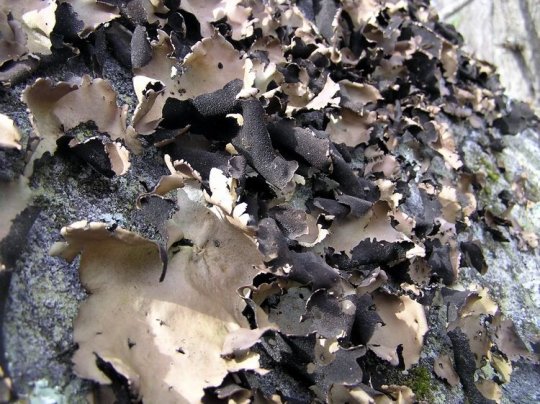
Umbilicaria (pictured above) is also called “rock tripe” in North America. It was a good candidate because, while not strictly aquatic, it does grow better on seaside cliffs and it is harvested in rainy weather. Its colours vary from black to light gray, so, that’s not white, but grayish could be close enough. I ultimately didn’t go with this one for another reason: it’s a delicacy in Japan, where it’s called “iwatake”, and that’s pretty much the only place where I could order some from. And it might seem petty, but I didn’t want the two secret ingredients to come from the same region of the world. There’s no fun in that.
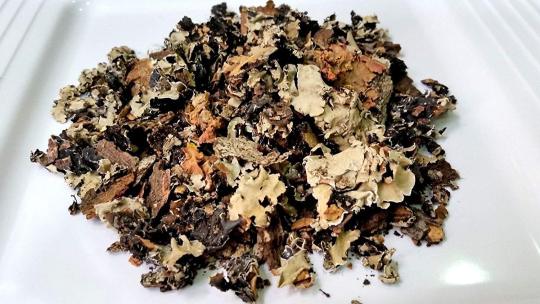
Kalpasi (above) also seemed like a good choice: it’s an Indian spice composed of ground up greyish-brown lichen, used in meat dishes. I liked it because, unlike other types of lichen, this one is supposed to actually taste good, with earthy, almost truffle-like tones. And we all know truffles always make a dish 50% fancier. For those interested, you can sometimes find it in the West in specialized shops, under the names kalpasi or dagad phool.
Coming down to the last one, Iceland moss! Despite its name, it is indeed a lichen and not a moss. I eventually settled on this one, for three reasons:
1) It’s not always white, but it can be.
2) It has been used as an unusual ingredient by the inventive chef René Redzepi in his two-Michelin-star restaurant Noma, in Copenhagen, considered one of the best restaurants in the world. The meals are… interesting, to say the least. Anyway, if it’s good enough to warrant two Michelin stars, we might as well use it.
3) As its name indicates, it grows in Iceland, more specifically on lava slopes. It’s not underwater, but I like the exoticism it brings to the table, in contrast to the other ingredients. Moreover, I don’t know how much of 4E has been retconned over the years, but I like the idea of Jarlaxle stumbling upon a rare type of white lichen on an ancient lava slope in Gauntlgrym just before he accidentally released Maegera (yes, the same one) and caused the eruption that destroyed Neverwinter. It gives a bit of flavor to the lichen, pun intended.
Here’s a picture of the bag I bought. It’s not the whitest, but it’ll do.
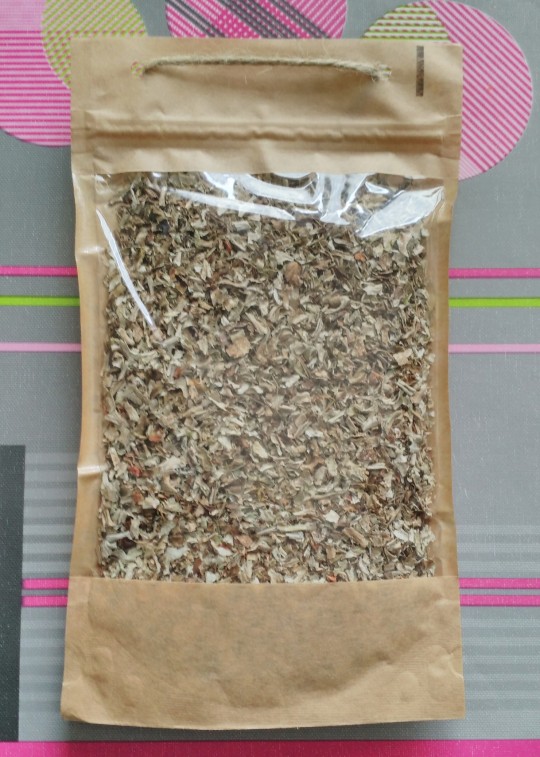
And there we are, the first step is done, we have our secret ingredients. For the more mundane ones, I went as “high-end medieval fantasy cooking” as I could:
- Waterdeep flour is most likely made in a traditional mill, probably water- or donkey-powered, so the flour I’ll be using comes from an abbey where it is made traditionally by monks who only sell it there. I’m not even joking. It’s an hour and a half away from where I live but I always make sure to pick up a few bags when I’m in the vicinity. It’s the finest flour I have ever seen, and I’m not exaggerating when I say it flows like water. The stuff is mesmerizing. Do you think they make flour in the Spires?
- The butter is also locally sourced from a dairy just outside my hometown, it’s partly made with the milk of cows I can see from my window. I don’t think the taste is that different from generic/industrial butter, but it’s as fresh as I can get, and I think that’s closer to what would be available in Waterdeep.
- Nothing much I can do about the powdered sugar, so it’s just store-bought. I could not find any mentions of sugar in official D&D sources, so I’m assuming they get the expensive one from Kara-Tur and they make the regular one from sugar beets, or that they use honey as a sweetener. We’ll just assume Strix gets hers from her Heward’s handy spice pouch, because we only need a small quantity of it.
- The eggs, on the other hand, come straight up from my grandma’s chickens. There are just 4 of them but their pen is bigger than her house and they eat like kings because the entire extended family feed them all their leftovers. I figure Strix probably raises her chickens the same way, or at least with the same amount of love. Their yolk is a bright yellow that you can’t get from anywhere else, and it makes for a good-looking pastry.
- Similarly, the apples come from my grandfather’s apple tree. It’s an exceptional tree that produces so much that 2 other varieties have been grafted on its trunk over the years; it now produces three different kinds of apple. We’re obviously a few months after the season though, so I’m using apples from Fall 2018 that were in my freezer. Not the freshest of ingredients, especially compared to the rest, but it’s the most “organic” apples I can get. I don’t think Waterdeep’s orchards use GMOs.

Now we need to find a way to make all of this into the best apple pie possible. On a sidenote here, I realize I’m not going to come up with the best apple pie ever out of the blue and simply by adding a strange fruit and an even stranger spice. My goal is for the pie to be the best it can be, while making it interesting enough so that a pie critic from the Forgotten Realms would be delighted enough to kiss a trash-tiefling.

First we need to figure out what Strix is doing to get the pie ready while her companions are fighting wererats and fishing treasure chests. I decided to use my tried-and-true crust recipe, which I have already posted here. It’s a bit long to make, as you need to make the dough, let it cool down for at least 30 minutes, and bake it blind for 10 to 15 minutes; that could be what Strix is doing during the hour+ when the others are away. It’s also way more buttery than most pastry recipes, and it’s a bit unusual in its use of powdered sugar, which I feel makes it closer to what the game’s recipe could be, because, well, it’s non-traditional. Given his choice of ingredients, Jarlaxle is obviously more on the disruptive side of baking.

Next, the filling. In my baking experience, I have found that apple pie is always better when the bottom is lined with applesauce: it keeps the crust from overcooking and keeps the apple slices moist for far longer, allowing you to cook the pie for the few minutes more that will turn crunchy apple bits into soft bites of caramelized goodness. The question now was, do I turn the nashi into purée and use that instead of applesauce, or should I use it as a fruit topping like an apple?
At first, I thought my supply of nashi pears would be very limited, so I would have to make them count. But once they showed up at my house, I realized my mistake: one pear weighs 800g (1.76 lb). These are heckin’ chonkers. Here they are, surrounding a normal-sized apple that wasn’t asking for any trouble:
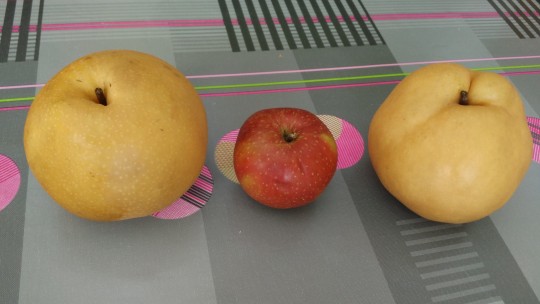
They’re as big as a grapefruit and four times as heavy. And the taste? Oh sweet Lathander, the taste. This is one of the juiciest fruit I’ve ever eaten. It feels like you’re eating a pear, but it tastes like a very sweet apple, with none of the tartness. It’s like a fruit for kids.
So, given that I had so much more fruit than I expected, I could try some experiments; I turned one half of a nashi into purée, and I baked a tray of mini-pies to try a few different combinations of fruit and sauce.

And here’s what I discovered –the nashi loses its taste when it’s cooked. There is absolutely no point in making an apple pie with nashi as a main fruit, because it’s like biting into a bland pear, which is a shame, given how delicious it is in its raw form. However, its juiciness makes it a pretty great ingredient for the purée. As I said, it loses its taste, so it doesn’t overpower the apples, but the texture of the “nashisauce” is everything you want in that kind of pie: it’s smooth, it’s moist, it ties everything together very well. So, I’ll count that as a win!

Now for the lichen. Chris/Jarlaxle said it was to be used as a substitute to cinnamon, so I had a few options: mix it in with the nashisauce, lightly coat the apple slices in it before assembling the pie, or dust the pie just out of the oven with grated lichen. At that point, you’re probably wondering what Iceland moss tastes like, and so was I. So I ate a bit of it. And regretted it immediately.

It is extremely bitter, and tastes like cheap tea. How do you turn that into an ingredient worthy of the best pie in Waterdeep? The first thing I tried was to let it steep in hot water, as if I was actually making tea. I made two cups: one to use the resulting water as a binding agent for the crust (which would imply reducing the amount of egg yolk, but you never know, it could be for the best), and one to see if I could “wash away” some of the bitterness off the lichen.
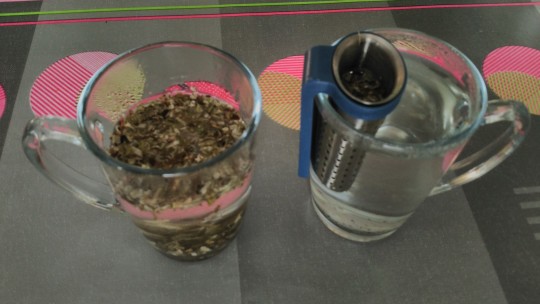
Well, again, no to both of those, it was just too bitter. But I discovered in the process that if you let the lichen steep in hot water long enough, it falls to the bottom of the cup and you can mush it into a kind of lumpy paste. Working from this, and after many tries, I finally came up with what I think is a good solution: I boiled the lichen in a lot of water with a few spoons of honey until it turned into mush, pressed that into a mold, baked it for half an hour, rolled the resulting paste into a ball with powdered sugar to reduce its stickiness, let it air dry overnight and well into the next day (I sped up the process by leaving it on top of my oven, which is often on in our home), and baked it once more at a very low temperature for almost two hours. The result was a very hard ball of cooked-but-unburnt lichen, honey and sugar, which I could grind into a sand-like powder.

Its only use in that state is to be scattered on top of the pie just out of the oven, which melts the sugar and frees the aroma of the lichen. Now here’s where it gets interesting: it’s sweet and the bitterness is still there, but it’s a good bitterness, like adding dark chocolate to curry or a red wine sauce. It’s not overpowering, it doesn’t overwhelm the apple taste, you don’t get it on every bite so you don’t get bored of it, and overall, it just tastes great. And that’s exactly what we want.
All right, everything seems to be figured out ingredients-wise, time to bake the first test pie! I was wondering what exactly would be the look of a “fractal helix pie”, so I just went with a pie-ception kind of concept and used once again my trusty mini-pie tray to make smaller pies on the main pie.

Also, I used an apple peeler and corer and only cut one side of the resulting product to turn the fruits into apple rings rather than the usual apple slices. I was hoping that it’d look more helix-y if I covered the pie in intertwined rings. Pop that in the oven for 50 minutes, and here we go!

So here are the results; it’s a good pie, all in all. The nashisauce certainly makes a difference for the best, albeit a small one –if you know it’s there, you can barely taste it, but if you don’t know it just feels like “hey, the applesauce did its job remarkably well today”. The lichen is also a welcomed addition on the bites where it is present, but you have to tell your guests that it’s there, otherwise their “Oh yeah, that’s pretty good in a dark chocolate-y kind of way” will turned into a shocked “What in the Nine Hells is that black stuff that tastes like a cursed grapefruit”.

Regarding the looks of the pie, it didn’t quite turn out as I’d hoped. Sure, it’s different, and the mini-pies-on-a-pie where a hit with the guests, but the apple rings had shrunk and broke off each other in several places, making it just a weirdly laid-out apple pie.

All in all, the first full-scale test was a bit disappointing, but not discouraging –the basics were there, and it was better than my usual apple pie. It just needed a little something to push it over the edge.
At this point, I’m thinking that the ingredients are pretty much the best we can realistically get, and I can’t imagine any cooking technique within my abilities that would improve the overall taste. So let’s add more ingredients and see if it does the trick. What can we add that doesn’t betray the lore of DCA and the setting of the Forgotten Realms?

Let’s dive back into the process: Strix has to bake her pies in a traditional bread oven, given that she worked in a bakery when she was a child. Which means her pies cook realistically in less than an hour in a very hot oven that stays around 250°C-275°C (480°F-530°F) all day. We’ve also seen in some episodes that the pies can be made and cooked in 10 minutes to half an hour, so she probably has a bunch of pre-cooked pastry case and keeps her oven above 300°C (570°F) , which is possible although quite insane.

But Chris said that the pie was let to bake overnight. How does that happen? Probably by baking the crust blind in the hot oven, which you typically don’t do for an apple pie, then take it out, let the temperature drop and the fire turn to embers, and finally putting the now assembled pie inside and closing the door so that the fruit slowly cooks and caramelizes. And what happens when you leave something in a semi-closed wood-fired oven for an extended period of time? It gets smoked. Literally. This is something I hadn’t thought of before, but every pastry made by Strix should have a very light woody, smoky aftertaste.
I don’t have access to a traditional baker’s oven (I’ve been planning on building one myself for years but never made the jump because I seriously doubt I could pull it off), but nowadays it’s easy to come by something called liquid smoke, which is exactly what it sounds like. So let’s get back to the mini-pie tray and bake some with different amount of liquid smoke, mixed into the applesauce or baked into the pastry.

And survey says: ooh boy you really don’t need much. If we extrapolate from the taste of the small pies, only about 5 drops should be added to the applesauce, and nothing to the pastry. It should give the pie that subtle smoky taste that hints toward campfire food. Any more and it tastes like the pie has been baked on an unwashed stove where you previously charred pounds of cheap, expired bacon.
Okay, we’re almost there… and then, as I was scraping my brain to find a new ingredient that would stay true to the pie, it hit me. It was staring at me right in the face from the very beginning.

It’s a LUSKAN pie. It’s from basically a pirate city! It needs rum to be complete! Again, there’s two way to go about this: either mix a big tablespoon of rum with the nashisauce, or pour it on the pie at the last moment to flambé it. But let’s be honest, flambé is just for show, and it will be much more flavorful if it bakes with the pie, so, let’s do that.
Also, I went back to Chris’s tweet announcing what the episode would be about, and he used this gif:
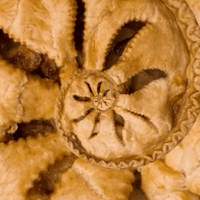
Soooo… Yeah, that’s probably why he called it a “fractal helix” pie. I don’t think I can replicate an ever-moving infinite pastry in real life, but I can certainly try.
Okay, let’s bake a new pie for real! This should be the one. I’m doing everything in one go, as close to DCA as I can:
1- Preparing the crust and baking it blind, undercooking it a lot, just enough so that there is no risk of the crust losing its integrity under the humidity of the nashisauce, while the rest of the Coven goes on a hunt for lichen and pears. Total time: 1 hour.
2- Beginning to cook the nashi into purée with half a vanilla pod (in a bit of last-minute inspiration) while peeling half of the apples; I am letting those oxidize for a bit, so that I’ll have two different colors of apple to work with. Time: 5min.
3- Boiling the Iceland moss with honeyed water and pressing the resulting paste into a mold: 15min.
4- Thoroughly blending the cooked nashi purée and setting it to cool down on the windowsill while the lichen bakes in the oven: 15 min.
5- Taking the lichen out of the oven and rolling it into a ball with powdered sugar: 5 min.
6- Mixing the nashisauce with liquid smoke and rum, peeling the rest of the apples, and finally assembling the pie in a pattern that suggests movement: 45 min. Yeah I went back and forth a lot with the placement and shapes of the apple slices. I’m thinking this is where the performance check comes into action, and I do not have proficiency in that skill.

7- And now, it has to cook overnight, while the ball of sweet lichen dries out on top of the oven. So what I’m doing is actually baking it at low temperature (175°C/350°F) for over an hour, and then, without ever opening the oven door to keep as much humidity inside as I can, turning it down to the smallest setting for another hour (that would be 100°C/210°F on my oven). Once this is done, I’m still not opening the oven door, and I turn the oven off, letting it cool down with the pie still inside overnight. Also I started it at 7PM, and now it’s a bit before midnight because I took my sweet time, so I’m going to sleep.

The next morning, I’m checking the ball of lichen: it’s not as hard as the first time, mostly because I didn’t let it dry long enough, but I should be able to grate enough of its surface to lightly dust it on the pie. Speaking of the pie, I’m finally opening the oven door, and… it looks perfect.

Or at least, it looks how I wanted it to look: the patterns are there, although some slices have shifted a little, and the two colors of apple give it a style that I absolutely love. I’m definitely using this trick from now on for my normal apple pies. And it’s still a bit warm. I’m taking the pie out and putting the lichen in on a very low setting to dry it out a bit more.
Four hours later, I am serving the pie; I popped it in the hot oven for a brief moment to slightly warm it up, grated a bit of lichen on top of it, and dug in with everyone.
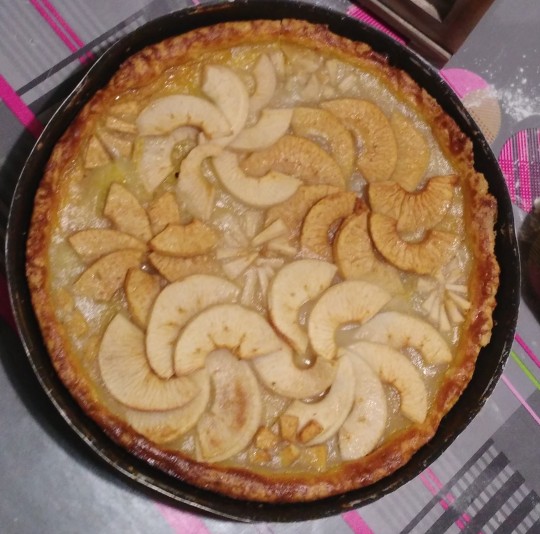
Is it the perfect pie? Probably not. Is it unusual? I mean, kinda, there’s a lot of subtle flavors in there that you don’t necessarily expect. Is it good? Yes, yes it is. The ingredients blend very well together. But more importantly, DID MY MOTHER SAY SHE LOVED IT AND ASK FOR THE RECIPE? DAMN RIGHT SHE DID. And that’s all I need to call it a success.

So here we are folks, this is the end of our Luskan fractal helix pie journey. I had a lot of fun coming up with that one, and I’m looking forward to the next culinary endeavors of the Chicken Foot Coven.
I guess that, as a conclusion, I need to address the biggest question we’re all asking ourselves: is this pie worth making?

If you just want to eat a good apple pie, no, not really. Just make your favourite apple pie, and maybe take some inspiration from this recipe to spice it up a bit. But if you want to try and bake it in the spirit of “let’s make a DCA-inspired pie”, please do. It’s tremendous fun. I loved tracking down and using those exotic ingredients, and the process of turning lichen into sweet sand makes you feel like an alchemist. Plus, it’s an easy recipe, there’s not much that can go wrong. It’s still just an apple pie.
All right, that’s it, we’re done. If you read everything, thank you so much for keeping up with my rambling. Don’t hesitate to ask if you have some questions related to all of that. Otherwise, I’ll see you all next time there is something to bake!
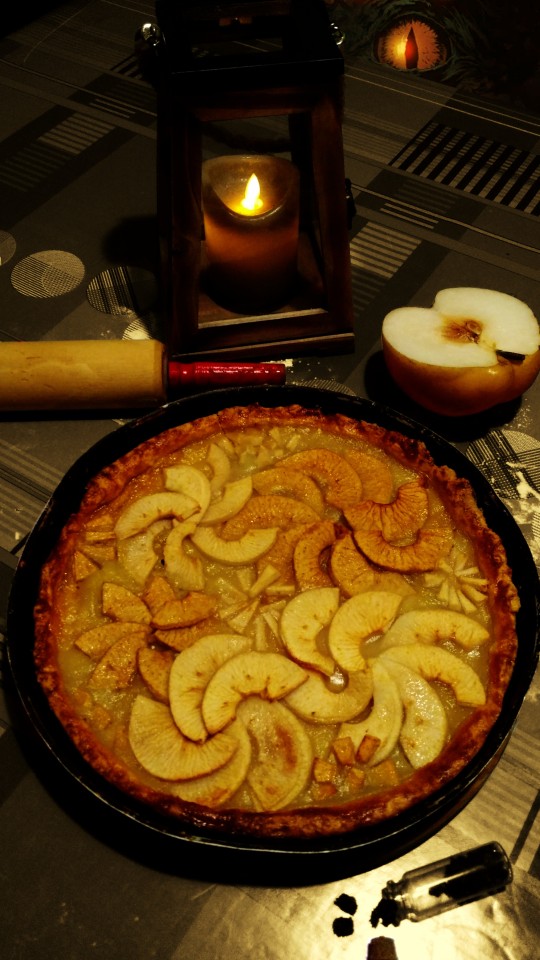
PS: “But what if I want to taste what the critic ACTUALLY ate, poison and all?”
So I did some research, and it seems that most poisons have a bitter taste, which is already present in our pie thanks to the lichen. So, potentially, the pie wouldn’t taste much different. I’d also wager that the Drow poison is tasteless. However, some “classical” poisons are known to have a distinct taste: cyanide supposedly tastes like bitter almonds, and poison hemlock allegedly tastes like mild parsnip. Yes, parsnip, you read that right. I don’t think parsnip will be a good addition to our pie’s flavor profile, but I’m positive that almonds will make it even better. If you’re not allergic.

15 notes
·
View notes
Text
Care garnacha nativa 2017

#CARE GARNACHA NATIVA 2017 WINDOWS#
Storage capacity in years from the vintage year:īodegas Care - Ctra. Perfect for an evening in front of the chimney, Gift for customers, Romantic Dinner More products from Care Family Vineyards.Food recommendation for Care Family Vineyards Garnacha Nativaĭrink this red wine from Spain ideally tempered at 15 - 18☌ as an accompanying wine to veal table top with beans and tomatoes, lamb ragout with chickpeas and dried figs or noodles with sausage dumplings. After fermentation, the Garnacha Nativa is aged for 8 months in oak barrels. Pure Grenache from old vines (over 50 years of age) and aged for 8 months in barrel, this is a first class expression of the grape variety with an explosion. Fermentation is then carried out in small wood at controlled temperatures. Here they are sorted and carefully ground. After harvesting, the grapes quickly reach the press house. The grapes for this red wine from Spain are harvested exclusively by hand at the time of optimal ripeness. Get Care Tinto Old Vine Garnacha 'Nativa' from Pearl Wine Company - Platt Park for 18. The Garnacha Nativa is an old world wine through and through, because this Spaniard exudes an extraordinary European charm, which clearly underlines the success of wines from the old world. In Aragon, the vines that produce the grapes for this wine grow on soils of limestone, slate and gravel. Only impeccable harvests were used for this exceptionally powerful varietal wine from Care Family Vineyards. This red wine clearly focuses on one grape variety, Garnacha. Vinification of the Care Family Vineyards Garnacha Nativa In the reverberation, mineral notes of the soils dominated by limestone and gravel are added. Again, there are hints of nashi pear and blackberry. At Drinks&Co, this red wine scores an average rate of 0 of 5 points and with the following scores: pen: 90. In the finish, this red wine from the Aragon wine-growing region finally inspires with considerable length. Ana elaborates this 2017 Garnacha Nativa Care, a red wine from the region of Cariena based on the best garnacha from 2017. Stores and prices for 'Bodegas Anadas Care Garnacha Nativa, Carinena' tasting notes, market data, prices and stores in USA. With its present fruit acid, the Garnacha Nativa reveals itself on the palate wonderfully fresh and alive. Numerous awards have been won by this wine: the Mundus Vini awarded the 2018 Grand Gold and the Concours Mondial de Bruxelles awarded the 2017 vintage Gold Medal.Based on critic scores. On the tongue, this powerful red wine is characterized by an incredibly fleshy texture. This red from Care Family Vineyards is just the right choice for all wine drinkers who like as little residual sugar as possible in the wine. In addition, there are hints of cocoa bean, cinnamon and black tea. This varietal Spanish wine displays wonderfully complex notes of blackcurrants, pear, quince and mulberries in the glass.
#CARE GARNACHA NATIVA 2017 WINDOWS#
If you pan the wine glass, this red wine reveals a high viscosity, which is evident in church windows at the glass edge. The edges also show a colour transition to violet. The powerful Garnacha Nativa by Care Family Vineyards shines into the glass with dense crimson.
Wein Pfaffmann - all Pfaffmann wines (117).
With 150 Hectares and 4000 m and two state-of-the-art. Bodegas CARE was founded in 2000, as a familiar and modern project focused on grape and wine quality. On the finish, the wine is rich, elegant, powerful, and fruit-driven. "noresultstext": "No results for Tasting Notes, Tasting Reports, Videos and Events. Country: Carinena, Spain Grapes Varietal: 100 Grenache/Garnacha Size: 750ml (RV) Rolling Vintage, due to supply. On the palate, one finds spices, toasty hints, and mature notes, with a perfectly integrated tannic structure.

0 notes